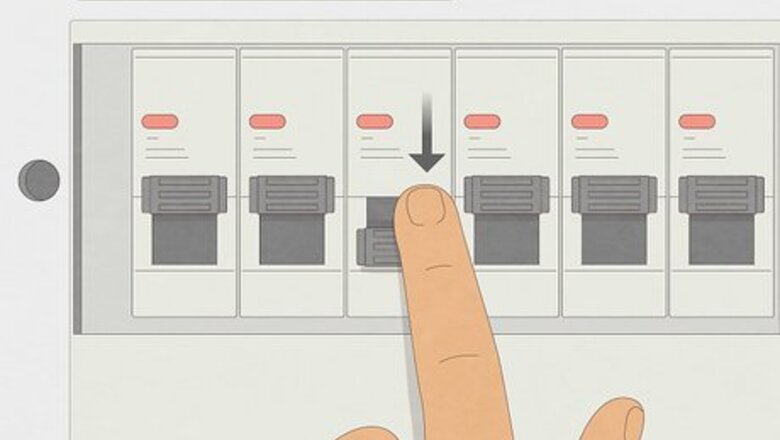
views
Shut off the power to the light.
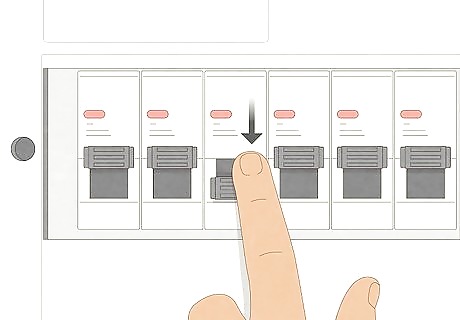
Go to the fuse box and cut power to the room with the fixture. Find the main breaker box for your home. If it isn’t in the basement, check your closets. Once located, turn off either the individual breaker for the room or the main power breaker. This will cut all of the power to the light so you can touch the wires without risking your safety. Always test the power by flipping the light switch a few times before proceeding. Just FYI, it’s important to use a fiberglass ladder when working on ceiling wires; the metal ladders can make bad electrical shocks even worse since it’s an electrical conduit.
Remove the old fixture if there is one.
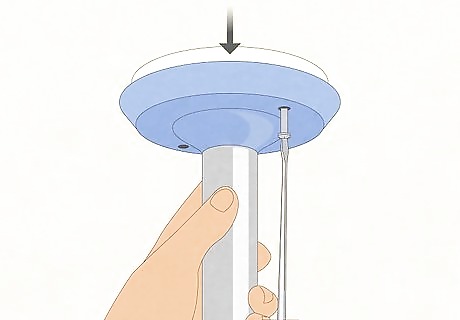
Unscrew any fasteners you see to unlock the light. Use a screwdriver to unscrew the mounting screws, remove hand-installed fasteners by hand, and pry off any mounting plates to expose screws as needed. Once the fixture is unlocked, twist or pry it out to remove it and slowly lower the fixture. Uncap all of the wires by unscrewing the wire nuts and set the fixture aside. Untwist the fixture wires from the house wiring. It is helpful to have someone to hold the fixture as you uncap the wires and remove any electrical tape. See a hook on the lip of the fixture? If you do, hang the hook around the bracket in the ceiling to let the fixture hang in the air while you work. If you aren’t confident or you’ve never worked on wires before, take a photograph of how the wires are connected. It’ll help when it’s time to install the new fixture. Note: If the fixture and the ceiling wires aren’t matched color-to-color, you must take a photo so you can test the wires to determine where the hot and cold (positive and negative) are.
Test the wiring to confirm it’s off.
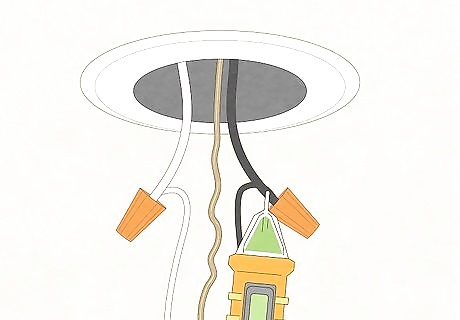
Use a voltage tester to confirm the wires are cold. Yes, you already shut the fuse off. But some electricians play fast and loose when it comes to the wiring on electrical panels, so play it safe to avoid shocking yourself. Press the tester against each exposed wire to confirm they’re off. If your wires aren’t color-coded: If the wires are not color-coded (green, brown, or yellow for ground/black, red, or blue for hot/white or gray for neutral), turn the power on and use a multimeter to determine which wires are which. Ground wires won’t display a number when you touch them with your multimeter. Positive wires will display a positive number. Neutral wires will display a negative number.
Assess the wiring and outlet box.
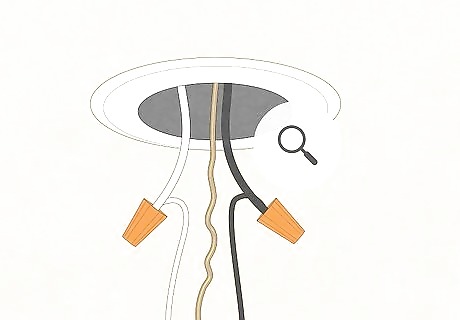
Make sure the box and wires can hold your new fixture. Houses built before 1985 may have wiring for fixtures rated at 90 degrees and less. Most of the more-recent fixtures require wires that can withstand hotter temperatures. Inspect the box to see if there’s a weight limit printed on it. If there isn’t, weigh your old fixture and compare it to the new fixture to ensure they aren’t super heavy. If you’re replacing a modern fixture and the wires are color-coded, you should be good to go. Look for wires marked NM-B, UF-B, THHN, or THWN-2. These wires are approved for the higher-temperature fixtures and require an electrician. If your outlet box isn’t strong enough to hold the new fixture, contact an electrician to have them reinforce or replace the box. Common sense is worth a lot here. If your wiring looks straightforward and professionally installed, you should be able to hook up a new light no problem. If it’s a rat’s nest in there, call a pro.
Pre-assemble the ceiling fixture.
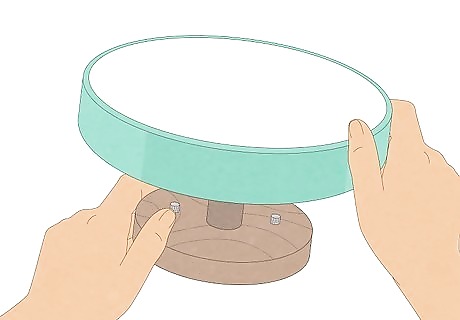
Before you get up on the ladder, build your light fixture or fan. Unpack the light fixture on a carpeted floor. Sit down and follow the instructions to put the components, mounting plate, and light fixture together. If you’re installing a fan, mount the blades now, too. This will save time and arm strain later. If your mounting bar or mounting plate—the thing that attaches to your outlet box—has multiple components, assemble that now, too. If the wiring for your ceiling light isn’t stripped, use wire strippers to pry off the last 1 in (2.5 cm) of protective coating to expose the copper interior.
Spread out the wires and check your layout.
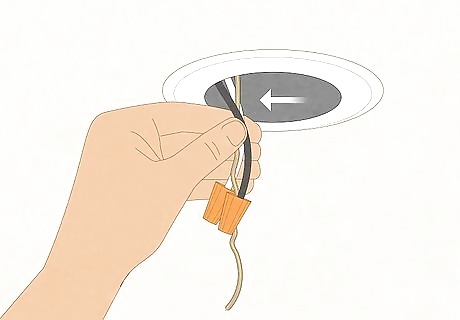
Make some space by pushing the ceiling wires to one side. All the wires are cold, so you’re good to touch them however you’d like. You’re going to want room to work, so spread out the wires coming in from the ceiling. Push them to one side so that you have plenty of room around the outlet box to work. Remove any wire nuts (aka wire pigtails). These are the plastic cones that secure wire connections. You’ll need all of the exposed wires to be free.
Mount the crossbar and hang your light on it.
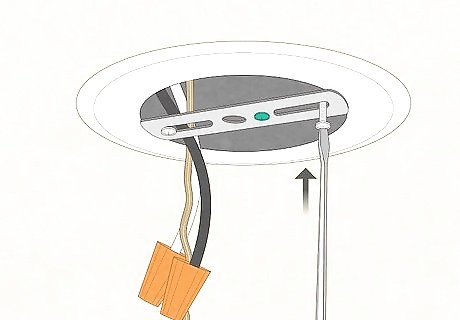
Every crossbar is unique, but you normally just screw it into the outlet box. Look on the outlet box for screw slots. Hold up the mounting plate for the new fixture to see how the screws line up. Tighten those screws until the mounting plate is secure. Then, look on the outlet box and mounting plate for a lip or hook. Inspect your fixture for a hook or lip. Use that hook to hang the fixture in the air so that you can work. If there is no hook for your light, grab an S-hook and wrap it around the mounting plate. Then, hang the fixture from that. If you can’t hang the fixture in the air from a hook, you’ll need to employ a friend to hold it up in the air for you. Unfortunately, this can take more than 5-10 minutes, so that friend better be strong and resilient!
Connect your wires.

Neutral goes with neutral, and hot goes with hot. The ground wire is the bare copper wire and should be connected to the green grounding screw in the crossbar. If the fixture comes with a yellow or green grounding wire, connect the grounds. To connect each wire, hold the copper ends together and twist them together with a wire nut. Make sure all of your connections are secure. If your fixture has a ground wire but the outlet box doesn’t (or vice versa), just cap the ground wire off and tuck it up in the box. It’s not mandatory to use it.
Test the light and tuck the wire.
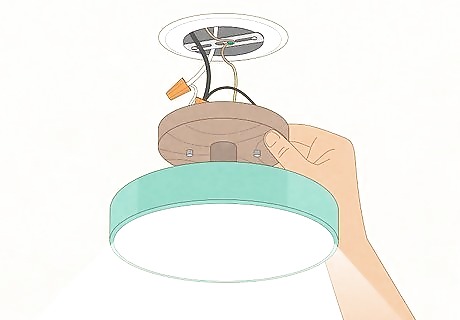
Make sure everything works as intended before you install the fixture. Throw a bulb into the ceiling fixture and go to your electrical panel. Turn the power to the room back on and test the light. If it works, shut the fuse back off. If it doesn’t, shut the fuse back off, go back, and check all of your connections. Once you’re good to go, tuck the wires into the electrical box. Bend all of the connected wires in concentric circles and lightly push them up into the outlet box. This way, they won’t get pinched by the light when you hang it up.
Secure the light to the mounting bar.
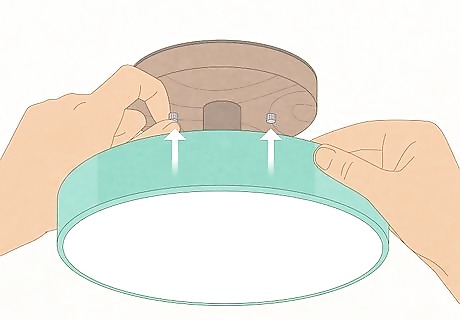
Align the light with the mounting screws and tighten. The final steps here depend on your specific fixture and how it is mounted. Most light fixtures will have a holes where you screw in fasteners to secure the light to the outlet box. Some fixtures are actually designed to be screwed into the box. Follow the instructions that came with your light to attach it to the ceiling. If you're using a center-mounted ceiling light, slide the canopy onto the rod so the nipple shows through the center hole. Screw on, and tighten the mounting nut. Make sure the light isn’t wiggling at all and you’re ready to rock!



















Comments
0 comment